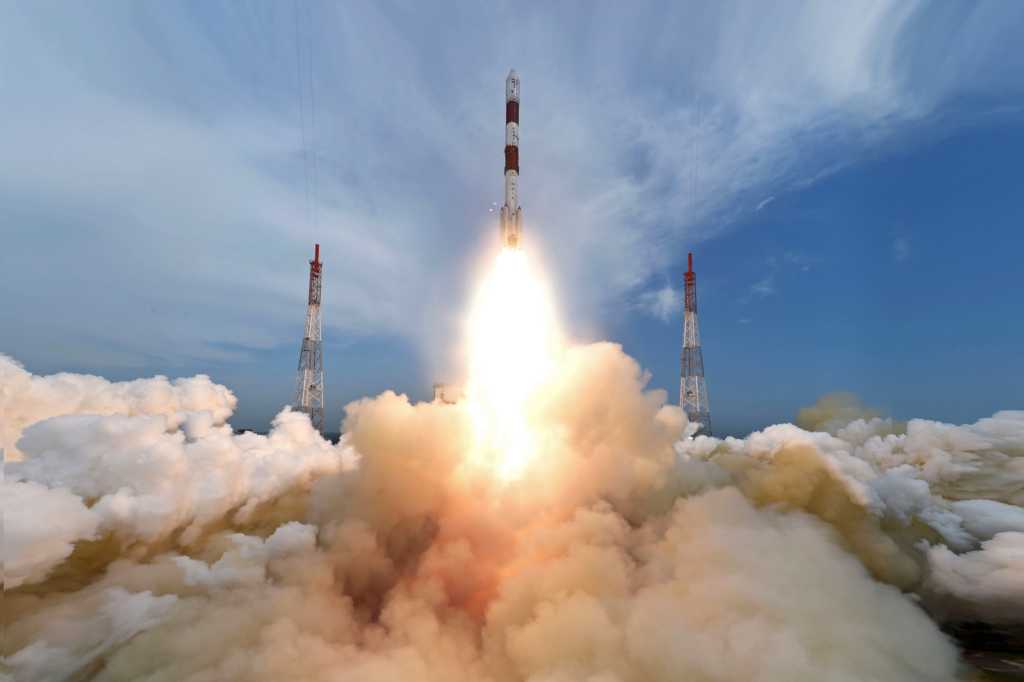The Indian Space Research Organization (ISRO) launched 104 satellites into space over the course of 18 minutes breaking the previous record of largest single day satellite launch. The previous attempt was made by Russian space agency which placed 37 satellites into the earth’s orbit.
The launch was very critical as the satellites were to be released from a single rocket every few seconds. Even if one of the satellites was ejected on the wrong path it would could have led to a collision between different satellites and have jeopardized the mission. But because of hard work and sheer precision of ISRO scientists there were no loopholes left and the mission was a roaring success.
Click here for Marathi version – एक रॉकेट, 104 उपग्रह आणि 120 कोटींचा आनंद
Of 101 international satellites, 96 belong to USA, five belong to Israel, Kazakhstan, Netherlands, Switzerland and United Arab Emirates, respectively. The major Indian satellite accompanying these was of Cartosat-2 series along with two Indian nano-satellites INS-1A and INS-1B . The Cartostat-2 series satellite will allow India to monitor activities of its hostile neighbors at a resolution of less than a metre keeping a bird’s eye view on Pakistan and China. The INS-1A and INS-1B carry a total of four different payloads from Laboratory for Electro Optics Systems (LEOS) and Space Applications Centre (SAC) of ISRO for conducting various experiments.
Eighty-eight of the all the satellites released on Wednesday weighed about 10 pounds and are called Doves. They belong to Planet Labs, a private company based in San Francisco that sells data to different governments and companies. Doves are the largest satellite constellation ever launched into space. The largest number of satellite launched by ISRO in single flight was 23 in June 2015.
The biggest advantage of ISRO is its missions is the cost-effectiveness with a success rate of 100% that keeps it ahead in an era that will most likely trigger the advent of space race once again. ISRO’s cost-effective services are attracting a lot of customers from international community as private companies like SpaceX struggle to lower the cost of their missions. SpaceX charged around USD 60 million per satellite while ISRO charged around USD 3 million per satellite between 2013 and 2015.
In 2016 the forex revenue generated by the Antrix (the commercial arm of ISRO) was Rs 230 crore. According to experts the average annual revenue of international satellite market for nearly 4 years is around Rs 13 lakh crore. Of this the launch services market is worth Rs 0.37 lakh crore. The launch capacity of ISRO earned it revenue of around Rs 239 crore through commercial launch services which is around 0.6 percent of the global launch services market.
Having achieved this feat is no ordinary thing and definitely not the right thing to be complacent about. The former President of India Late Dr. APJ Abdul Kalam once said “Don’t take rest after your first victory because if you fail in second, more lips are waiting to say that your first victory was just luck.”
The next big mission of ISRO is Chandrayaan-2.
It is India’s second lunar exploration mission after Chandrayaan-1. The mission is planned to be launched to the Moon by a Geosynchronous Satellite Launch Vehicle (GSLV). It includes a lunar orbiter, a lander and a lunar rover, all developed indigenously by India. India is gearing up to launch Chandrayaan-2 by end of 2017. Besides this ISRO has also signed a contract with an Indian start-up called Team Indus to carry its spacecraft to the moon on its Polar Satellite Launch Vehicle (PSLV). The space agency also plans to send more Mars missions and a trip to Venus is likely to be scheduled in near future. It won’t be long when ISRO will send manned missions to space and achieve another feat.
